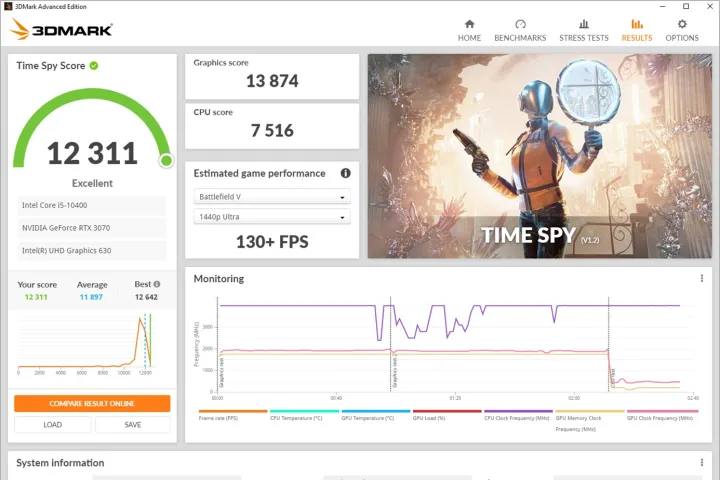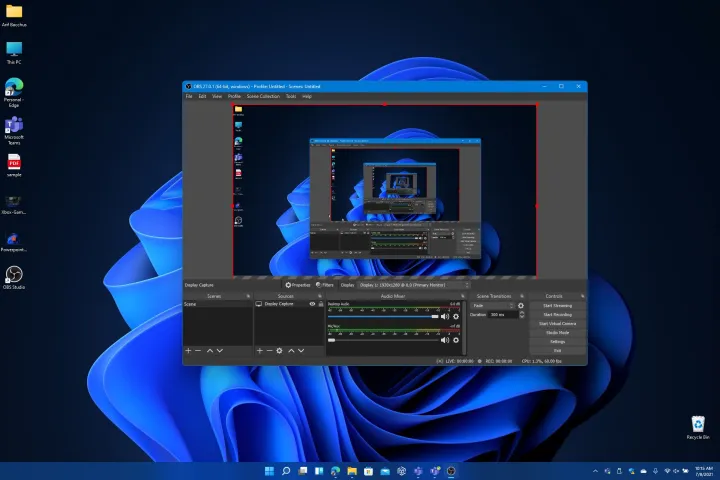These days, you don’t need to install a ton of apps to set up a gaming PC. Grab your favorite browser, download Steam and any other necessary storefronts, and maybe a few utilities to manage your hardware, and you’re set. But there’s a huge, probably ignored, list of useful software available directly through Steam.
Steam does a terrible job of showing you available software. They are not usually mixed in with the games in the Steam store, but are instead placed in a completely separate section that is only accessible if you know where to look. This is a shame, because through Steam I have found some apps that I can’t imagine living without.

However, Steam is home to a lot of low-quality apps, from so-called driver boosters to utilities that haven’t been updated for years. However, I have compiled a list of apps that I find essential for my PC and I encourage you to try them out.
Let’s start with the basics. You may have heard of one (or all) of these apps, but don’t assume that just because they’re popular, everyone knows about them. Except for Wallpaper Engine, which costs $4, the other two apps are free, so you should definitely have them on hand.
It’s important to have an objective benchmark for your gaming PC, and 3DMark is just that. It’s a consistent test that outputs a score at the end, and while it doesn’t always fully represent your PC’s performance, it does provide a much more consistent basis for comparison than in-game benchmarks. And that’s useful in many cases.
If you’re replacing hardware, you can use 3DMark to quickly see how much performance it will really improve. Or maybe you’ve been experimenting with undervolting or overclocking. 3DMark will show you the effectiveness of your efforts. Even if you don’t tinker, 3DMark will show you your score compared to other similarly configured PCs, giving you a rough idea of whether you’re getting the performance you expected or if there are any issues.

The full version of 3DMark costs $35, but you don’t really need it. The free version, listed as a demo on Steam, includes the key benchmarks available to paid users, including the new Steel Nomad benchmark. Gaming PCs are built to play games, not run benchmarks. But don’t underestimate 3DMark as a quick performance check tool.
When my friend gets a gaming PC, I always give him the app “Wallpaper Engine”. There aren’t many apps, let alone games, that have a 98% positive rating on Steam, but Wallpaper Engine has achieved exactly that. The $4 app gives you full control over your desktop wallpaper and a huge database of community-created designs. There are literally hundreds of thousands of wallpapers to play with or create your own – static, animated, interactive, and more.
Wallpaper Engine isn’t perfect. Animated wallpapers take up some of your PC’s resources and can cause problems while playing. Luckily, this utility offers plenty of tools to tweak your backgrounds, from pausing animations to choosing scaling settings. If you don’t have Wallpaper Engine on your Steam account, you’re missing out.

The basics are as you’d expect, but the real treasure lies deeper on the Steam software side. These are the apps that changed the way I use my gaming PC, but that doesn’t mean you have to buy them all. All of these are paid and cost anywhere from $2 to $40, so ideally you can find a few that suit your setup without buying everything.
This app is so important that we considered adding it to the Basics section above. Lossless scaling has been around for a few years, but it’s only become popular in the last few months. It’s a utility that adds upscaling and frame generation to any game with any graphics card. And it doesn’t modify your game files in any way. Lossless Scaling runs on-game, so it can be used with online titles that have anti-cheat software.
scaling works, but if your game doesn’t have a built-in upscaling tool, options like Nvidia Image Scaling (NIS) and Radeon Super Resolution (RSR) are free to access. The reason to spend $7 on Lossless Scaling is the frame generation. It includes 2X and 3X frame generation features that work with any game, doubling or tripling the frame rate at the touch of a button. It’s not perfect, and there are some visible visual artifacts when compared to tools like Nvidia’s DLSS 3. But the fact that you can use lossless scaling in any game is great.

The last time I used it was with Elden Ring while playing the new Shadow of the Erdtree expansion, and I couldn’t imagine playing the game without lossless scaling enabled. Considering that this tool doesn’t grab any detail from the game itself, it works surprisingly well and I’ve found a use for this tool in just about every game I play.
JustScroll is a simple app that I’ve written about before. It lets you control the volume of your PC using the scroll wheel on your mouse. You can either hover over the taskbar and scroll, or hold down the Windows key and scroll to adjust the volume. There are also some configuration options to determine how much volume you want with each movement of the scroll wheel.
And that’s it. JustScroll works as advertised and is everything you’d expect from a $2 app. This is especially useful since my Meletrix BOOG75 keyboard doesn’t have a dedicated volume control. If you find yourself in a similar situation, be sure to get JustScroll.
If you’ve been following tech news in the run-up to the launch of Windows 11, you’ve probably heard of Start11, a complete overhaul of the Windows 11 Start menu, Start button, and taskbar, allowing you to choose from a variety of styles, customize icons, organize shortcuts, and more.

Gives you all the customization options you need for Windows 11. Start11 was originally intended to bring back the familiar taskbar from previous versions of Windows, but it can do a lot more than that. If you want to dig deeper into the configuration options, you can make your Start menu and taskbar even more useful. Start11’s search function is also much better than Windows’ own search function, which often fails to find even when you type the name of a specific app or file.
The only downside is that Start11 costs $10, which is expensive for customization options that should be included in Windows. I can’t imagine booting up my PC without Start11. Whereas I previously avoided the Start menu with its useless recommendations, it now serves as a one-stop shop for the apps and files I use most, and it does so with style.